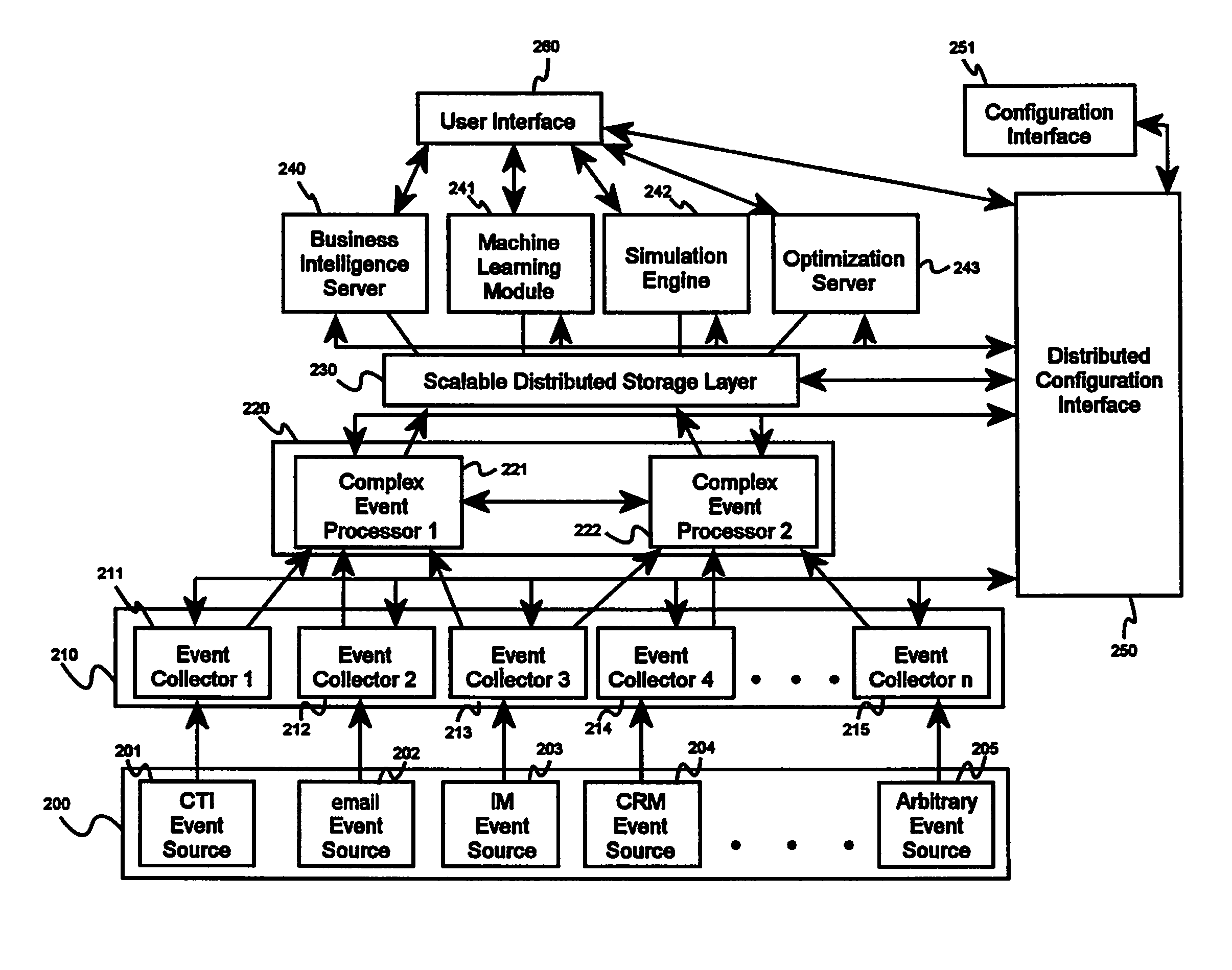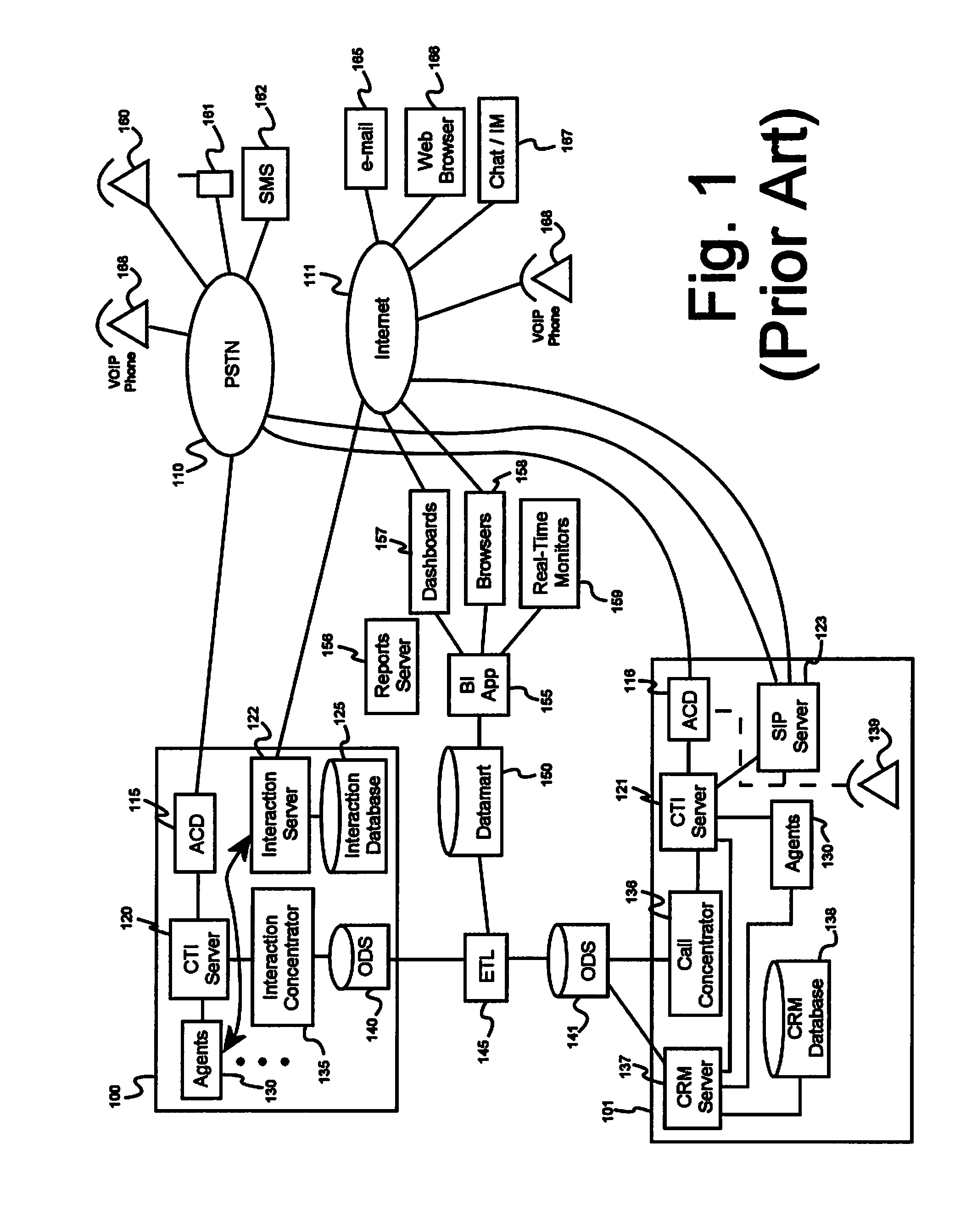System and method for conducting real-time and historical analysis of complex customer care processes
a customer care and historical analysis technology, applied in the field of data analytics, can solve the problems of “hard-wired” nature of contact center analytics, more complex business processes engaged in by enterprises, and surprising, intrinsically complex, problems such as the effect of complex customer care processes
- Summary
- Abstract
- Description
- Claims
- Application Information
AI Technical Summary
Benefits of technology
Problems solved by technology
Method used
Image
Examples
Embodiment Construction
[0045]The inventor has conceived, and reduced to practice, a cloud-based deep analytics platform that addresses the several shortcomings, described in the background section, of current systems in the art. Systems deployed in accordance with one or more embodiments of the invention will generally be easily extensible to handle new data sources, new call models, new interaction types, and series of multiple related interactions, all while providing a very strong answer to enterprise's security concerns.
[0046]One or more different inventions may be described in the present application. Further, for one or more of the invention(s) described herein, numerous embodiments may be described in this patent application, and are presented for illustrative purposes only. The described embodiments are not intended to be limiting in any sense. One or more of the invention(s) may be widely applicable to numerous embodiments, as is readily apparent from the disclosure. These embodiments are describ...
PUM
 Login to View More
Login to View More Abstract
Description
Claims
Application Information
 Login to View More
Login to View More - R&D
- Intellectual Property
- Life Sciences
- Materials
- Tech Scout
- Unparalleled Data Quality
- Higher Quality Content
- 60% Fewer Hallucinations
Browse by: Latest US Patents, China's latest patents, Technical Efficacy Thesaurus, Application Domain, Technology Topic, Popular Technical Reports.
© 2025 PatSnap. All rights reserved.Legal|Privacy policy|Modern Slavery Act Transparency Statement|Sitemap|About US| Contact US: help@patsnap.com



